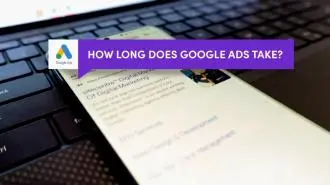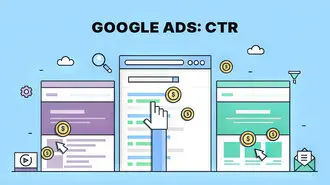Summary / TL;DR
Effective PPC keyword research is essential for maximising ad performance, conversions, and return on investment. It involves selecting high-intent, relevant keywords that align with user search intent, breaking them into structured ad groups, and targeting users across all stages of the buyer journey. Long-tail keywords offer lower competition and higher conversion potential, while negative keywords help exclude irrelevant traffic. Tools like Google Keyword Planner, SEMrush, and Ahrefs assist with discovering and analysing keyword volume, competition, cost-per-click, and quality score. Incorporating competitor analysis and continuous optimisation ensures relevance and performance. Integrating SEO data enhances keyword targeting, improving cross-channel effectiveness.
The foundation of any successful PPC campaign lies in its keywords. The right PPC keywords can transform an ordinary campaign into a revenue-generating machine, while poorly chosen ones can drain your budget with little return.
Crafting an effective keyword strategy is no small feat. No universal formula fits every business, as each industry and target audience is unique. However, core principles and tools like Google Ads can guide you toward the best results.

Today, we’ll walk you through the essential steps of selecting and optimising keywords for your PPC campaigns, helping you drive better performance and maximise ROI. Whether you’re a seasoned marketer or a beginner, this resource will sharpen your keyword research and strategy skills. Let’s get started!
Want to receive updates? Sign up to our newsletter
Each time a new blog is posted, you’ll receive a notification, it’s really that simple.
What is PPC Keyword Research, And Why Is It Important?
Pay-per-click (PPC) keyword research involves selecting the most relevant and highest-reach keywords to target in PPC ad campaigns for maximum impact. The process consists of searching and listing terms that potential customers might use in Google searches to find your business’s products or services.
Selecting the right keywords is vital as this impacts your ads’ relevance, visibility, and efficacy. The correct keywords help deliver your ads to the right audiences at the right time, resulting in better click-through rates and greater conversions.
Understanding user intent, which is why users use specific search terms, will help you select the correct keywords that match their needs. This will increase the chances that your ads will reach the right audiences, boosting the potential for conversions.
Understanding Search Intent for Effective Keyword Selection
As mentioned before, search intent is why a user is searching in the first place, the goal they want to achieve from their search. Broadly speaking, there are four primary types of search terms:
- Informational: which are used to just search for information such as “how to…” searches
- Navigational: which is used to reach a particular website or page
- Commercial: which users use to search with the intention to purchase
- Transactional: used by users ready to make a purchase
The last two types are essential for achieving higher conversions. However, none of these categories should be ignored as they deal with different stages of the buyer’s journey. Aligning keywords and ads with the right stage can achieve better relevance and targeting. This way, your ads will match the users’ intent and help achieve better results.
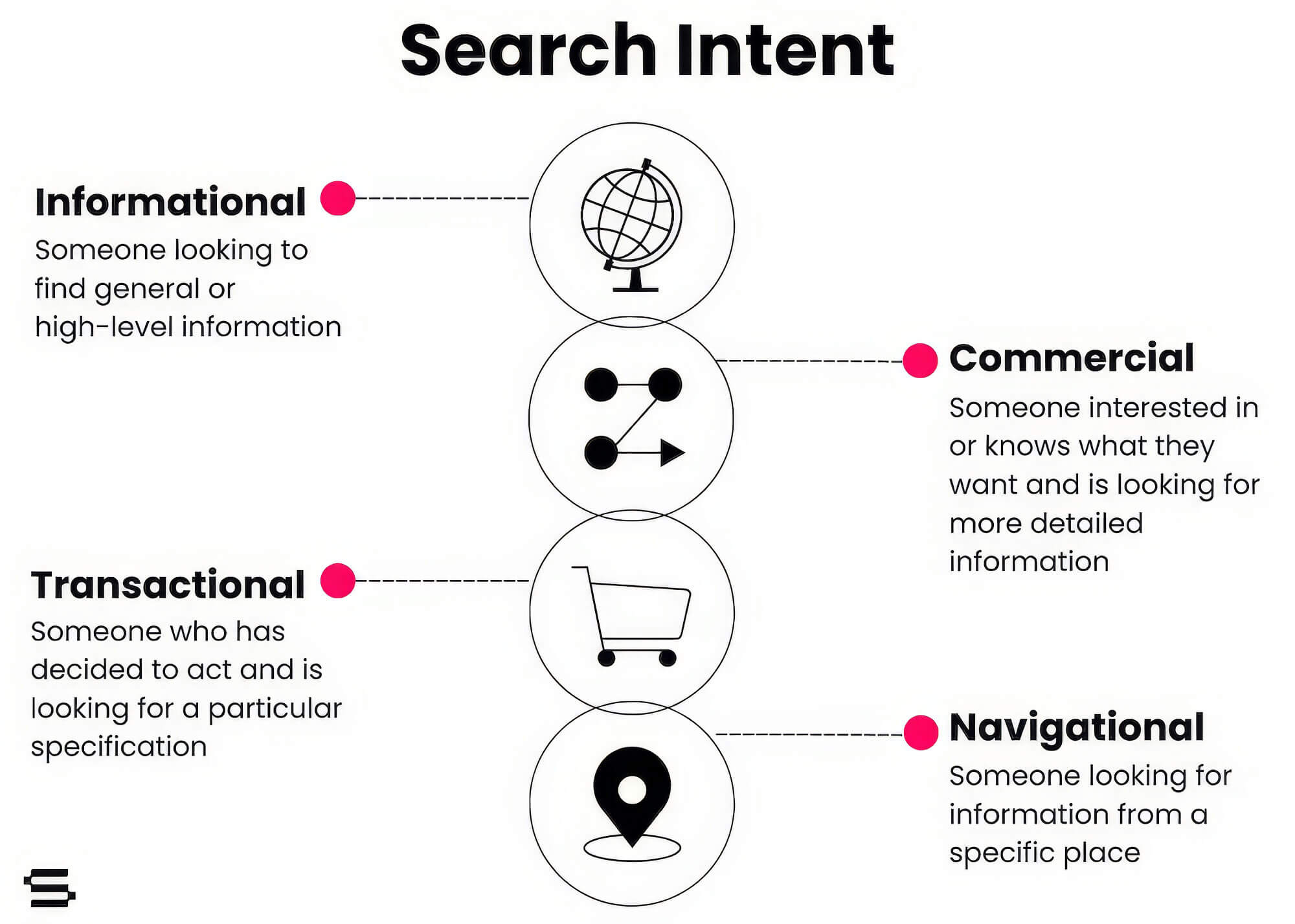
Brainstorming and Identifying Relevant Keywords
Creating a list of relevant keywords starts with brainstorming and identifying fundamental search terms related to your product/services. Think about what terms customers might use to search for the items your business offers. The target audience’s demographics will play a significant role in this process.
Next, you need to begin analysing your own content and website structure. Identify keywords you’re already using and separate the ones working from those not performing well. This can help eliminate terms that are no longer relevant.
At the same time, you should ensure you’re up to date with industry-specific terms and keep a close eye on the competition. This way, you can stay aware of the latest trends and ensure you use the commonly used terms in your niche.
Finally, pay special attention to customer feedback. Customer reviews, comments, and queries can help reveal keywords specific to the audience’s needs. Integrate these into your keyword list to create a solid basis for your PPC campaigns.
Leveraging Keyword Research Tools
We get it: creating a list of effective keywords is easier said than done, especially when the list can run into hundreds of keywords, if not thousands! However, keyword research isn’t something that you need to do manually. Many keyword research tools can help you in this task.
Google Keyword Planner is a free tool that provides detailed search volumes, trends, and competition data. It’s also effortless to use: enter a seed keyword relevant to your business/industry, and it’ll generate a list of terms used in that niche. Once you have the list and associated data, you can sort and filter them to target high-performance keywords.
Ahrefs and SEMrush are other popular alternatives with free (limited use) and paid versions. Both these tools have detailed keyword research features, such as competition analysis, keyword difficulty and engagement metrics. Using any combination of these tools, you can create a list of suitable keywords you can target through your PPC ads.
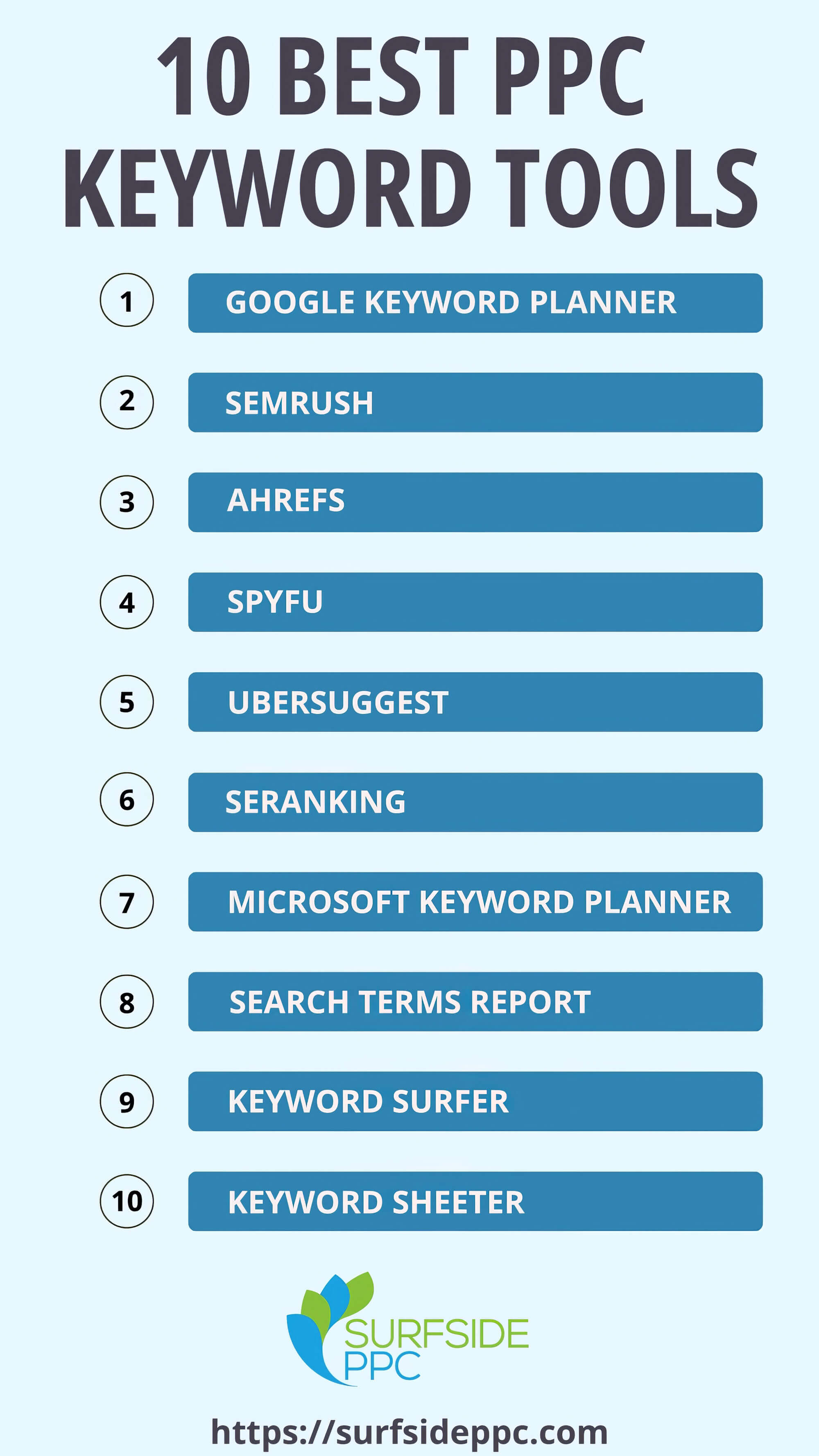
Analysing Competitor Keywords
Business is a competitive field in every aspect, and the same holds for PPC advertising. Naturally, keeping a close watch on what your competitors are doing is essential to ensure you can stay ahead of the game. Competitor keyword analysis can help you understand what you’re doing right in your PPC campaigns and where to improve.
Identify the top keywords your competition uses to drive traffic and conversions. Using software like SpyFu, Ahrefs or SEMrush, you can get detailed data on these keywords, such as search volume, keyword difficulty and CPC. This data will allow you to understand which keywords your competition uses and which are the best performing.
After you have a list of keywords ready for targeting, analyse how the competition uses those keywords in their content and ad copies. Search for successful ad types and try to follow patterns, such as well-performing calls to action and creative designs. A thorough examination of landing pages can also provide insights into their UX and conversion strategies.
Once you understand your competition’s strategies well, it’s time to identify weaknesses and gaps and start looking for opportunities. Are they missing any keywords? Can gaps in their content or landing page designs be improved? This is where you can improve your ads and create landing pages to fill present gaps and gain an edge.
The best way to achieve this is to copy your competition’s keywords and tactics and create a unique proposition from your end that customers can’t ignore. For instance, instead of targeting the exact keywords, your ads can target long-tail variations with greater intent. Or you can modify offerings based on your products/services to help the PPC ads resonate better with the audience.
The bottom line is that thorough PPC keyword research of what your competitors are doing can help you target keywords related to your niche and create a successful PPC campaign that converts and drives sales.
The Power of Long-Tail Keywords
PPC keyword research can only be discussed with a section on long-tail keywords. People use longer, more specific phrases when they have a very targeted intention, as opposed to shorter, broader terms used for general queries. Long-tail phrases usually contain three or more words describing the user’s intent.
Long-tail keywords are highly relevant in PPC advertising as they are particular and match what the user is trying to search for. As a result, the relevance of the ads increases, leading to better CTR and higher quality scores.
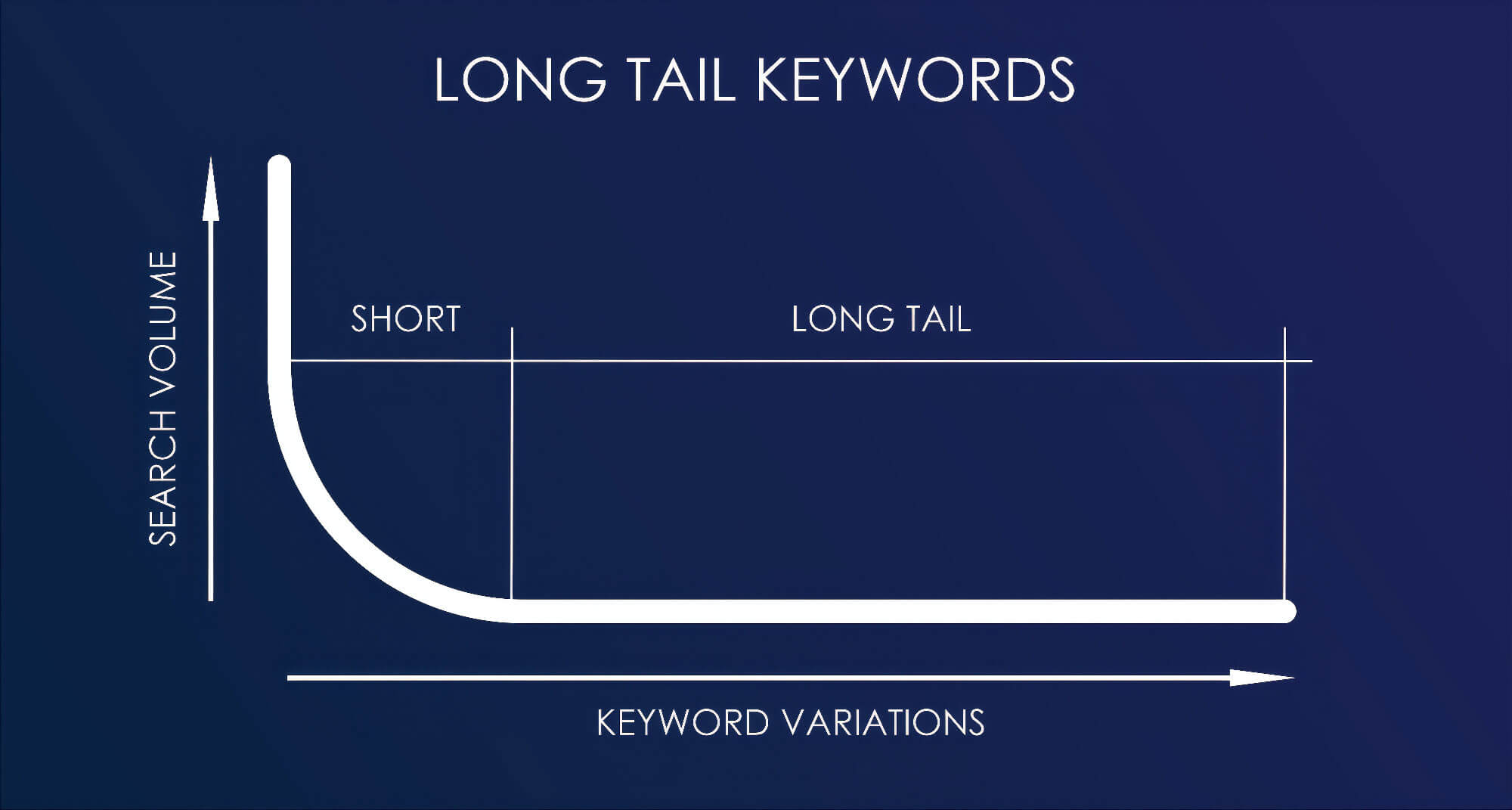
Long-tail terms have lower keyword difficulty, making them easier to rank for and lower competition. This makes them more affordable regarding bid costs and allows you to reach the top of the SERPs without overshooting the budget.
Also, users searching with long-tail terms have already progressed along the buyer’s journey and have a greater chance of converting. All of these make long-tail keywords very powerful and indispensable for PPC ads.
However, not all keywords, and certainly not all long-tail keywords, are created equal. You need to select keywords after evaluating appropriate metrics and segregating them into usable groups. The following two sections delve into the details of that process.
Evaluating Keyword Metrics
Selecting the most effective keywords according to your campaign’s goals and target audience is crucial for its success. This is best done by understanding key metrics that explain the performance of keywords and help you make strategic optimisations to your ads. The following are vital metrics to track and evaluate to understand which keywords (long-tail or short) will provide you with the desired results.
1. Search Volume
This measures the monthly (usually) volume of searches for a keyword, and a high volume suggests greater popularity. However, high-volume keywords will be more competitive and harder to rank for.
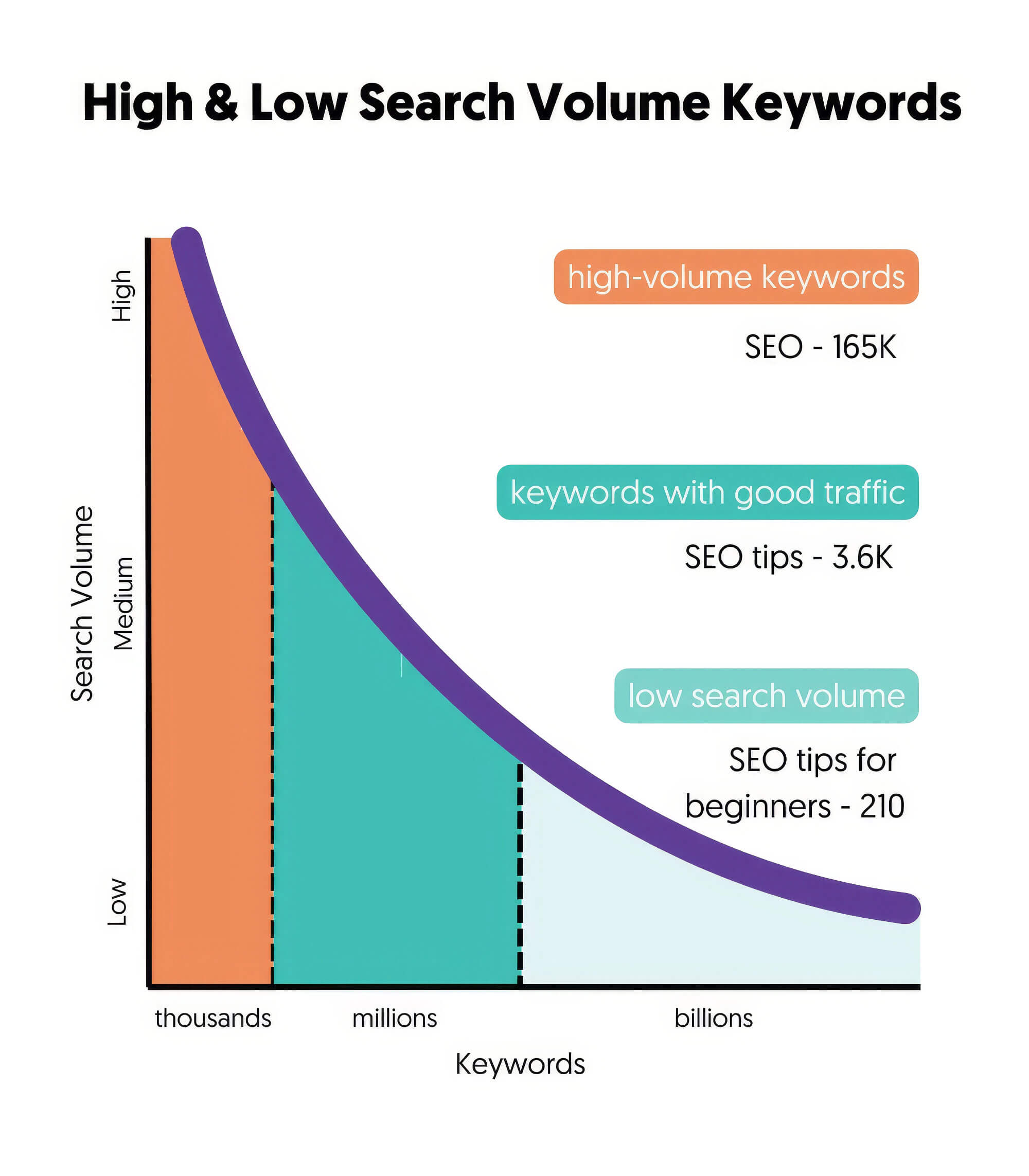
2. Level of Competition
This indicates the number of competitors bidding on the same keywords, usually classified as low, mid or high. The higher the competition, the greater the CPC, so balancing this with the budget and campaign target is vital.
3. Cost-per-Click (CPC)
You must pay CPC to Google Ads or any other ad platform whenever a user clicks on your ads. This usually varies based on the keyword’s competition level. Higher CPC keywords cost more but can bring high-value conversions if used correctly. So, you must understand the tradeoff between your ads budget and returns before going with a keyword.
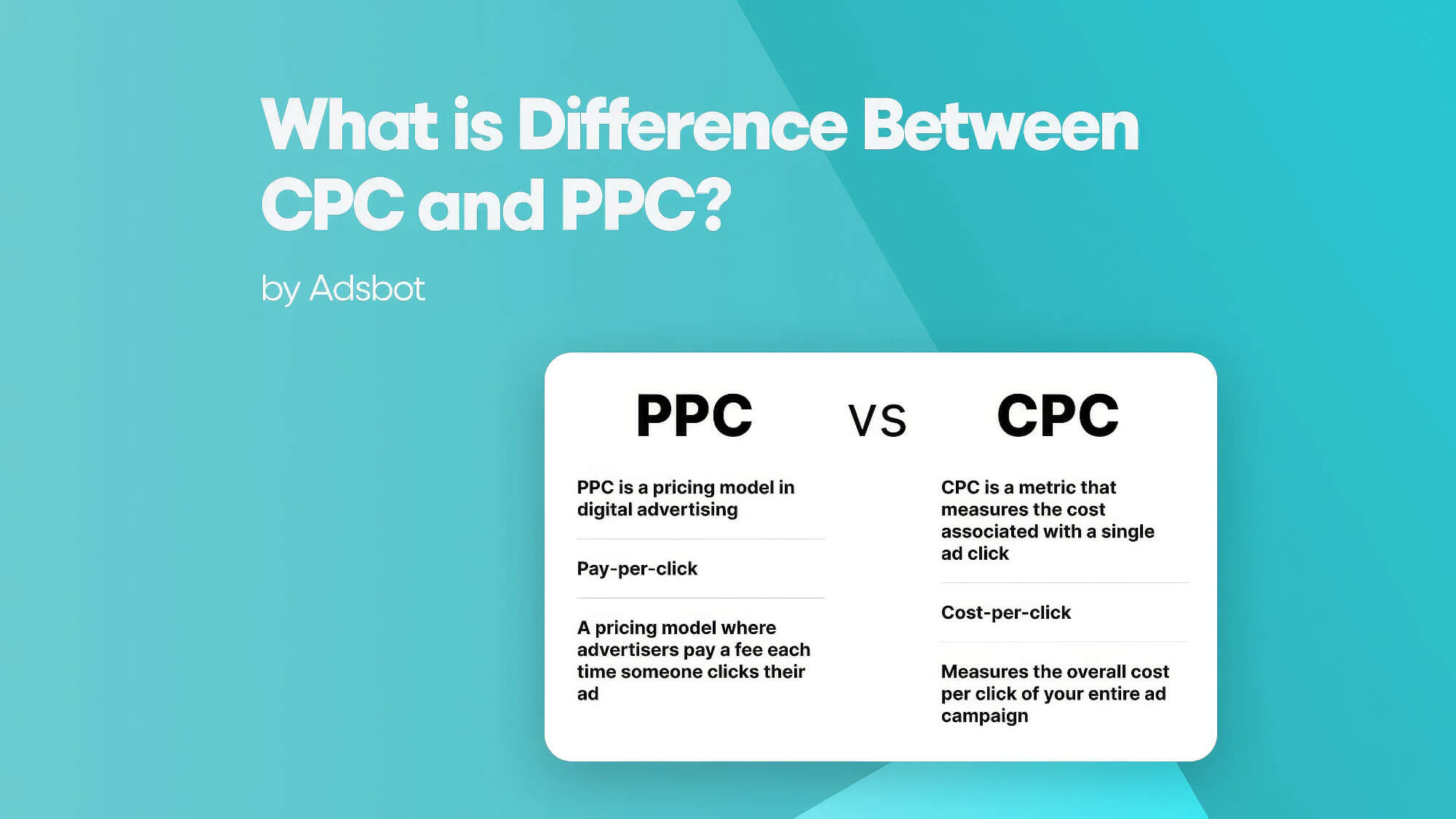
4. Quality Scores
This is a measure of the relevance of your ads and their quality. High-quality scores can give you lower CPCs and better ad rankings. You’ll need to target keywords that align with your landing page content and ad copy to improve scores.
It’s not always a straight line from the metrics to the keywords you select for your ads. Achieving a balance between these is the key to success. For example, a high-search volume keyword might be attractive, but if it’s high competition, it might be better to target lower-volume keywords with greater intent.
Similarly, achieving a balance between CPC and ROI, as is the quality score, is also vital. For this, you can set threshold values for target metrics depending on your campaign goals and then select keywords based on those metrics. Also, ensure you prioritise the right keywords based on your campaign targets.
Organising Keywords into Campaigns and Ad Groups
Organising keywords into well-structured campaigns and ad groups helps improve the relevance of ads, enhance quality scores, and streamline the campaign overall. It also lets you create more optimised ads and target the right audience.
When you group keywords according to your products or services offered, you can create highly specific ads that focus on the advantages of your products/services. For example, if you’re a shoe retailer, you can run separate ads for “running shoes” and “formal footwear.” Even within these, you can create groups for budget buyers and premium products to narrow the target audience further.
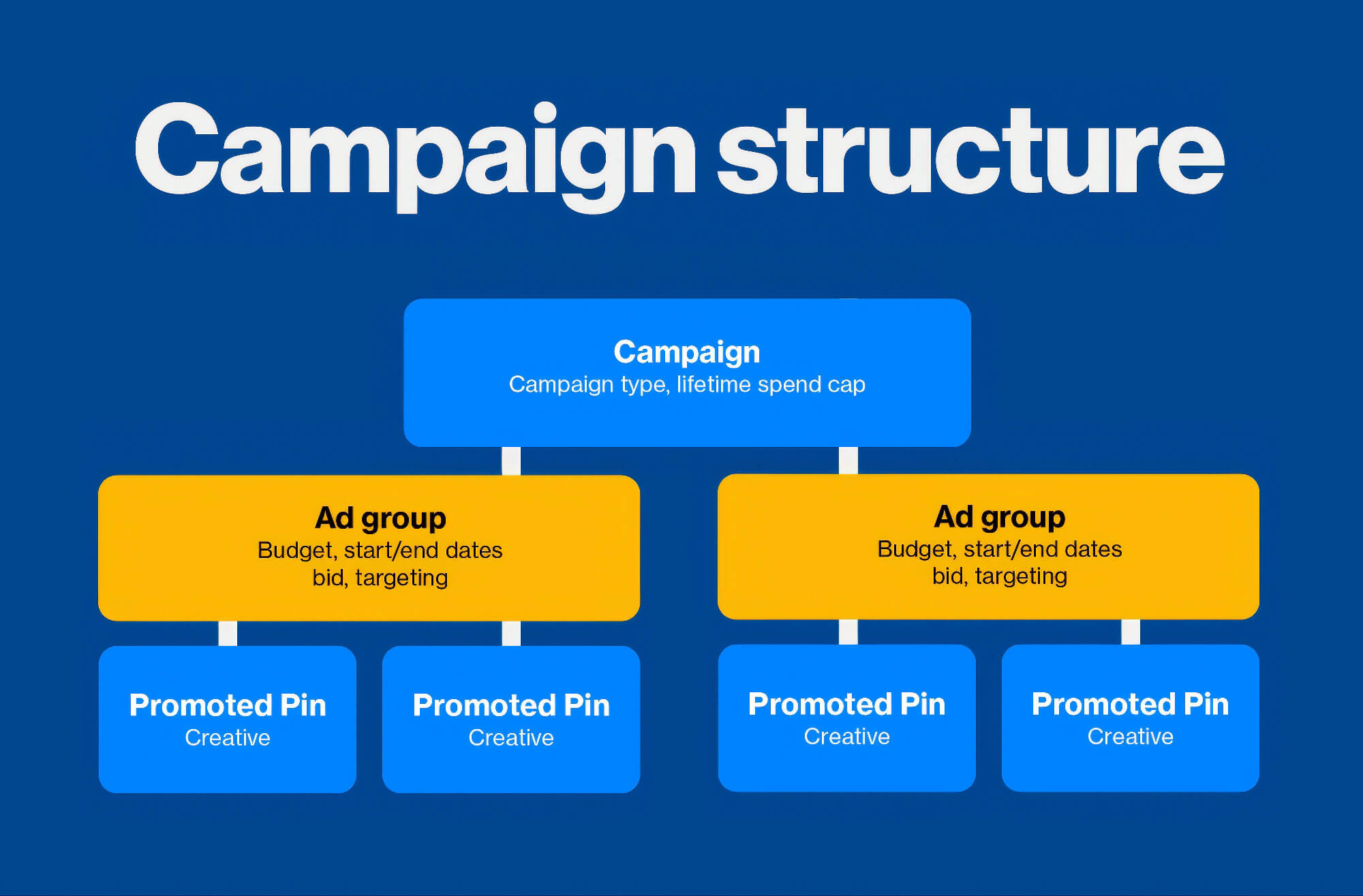
You must create themed ad groups and ensure that your ad copy and corresponding landing pages match your target keywords. This will boost your quality and relevance scores. You should also review your ad groups regularly to remove lesser-performing keywords and include more relevant ones and variations of primary keywords.
The Role of Negative Keywords
Now, let’s look at negative keywords, a confusing topic for many newcomers to the PPC space. Negative keywords help to exclude irrelevant traffic and ensure that your ads appear only for the intended audience. This way, you get to improve the efficiency and cost-effectiveness of your campaigns.
Let’s understand this better with an example. Suppose you’re a premium leather jacket seller; your target audience is those looking for high-end leather jackets. In such a case, you might use “cheap,” “low cost,” and “discount” as negative terms to exclude your ads from appearing to searchers looking for budget products.
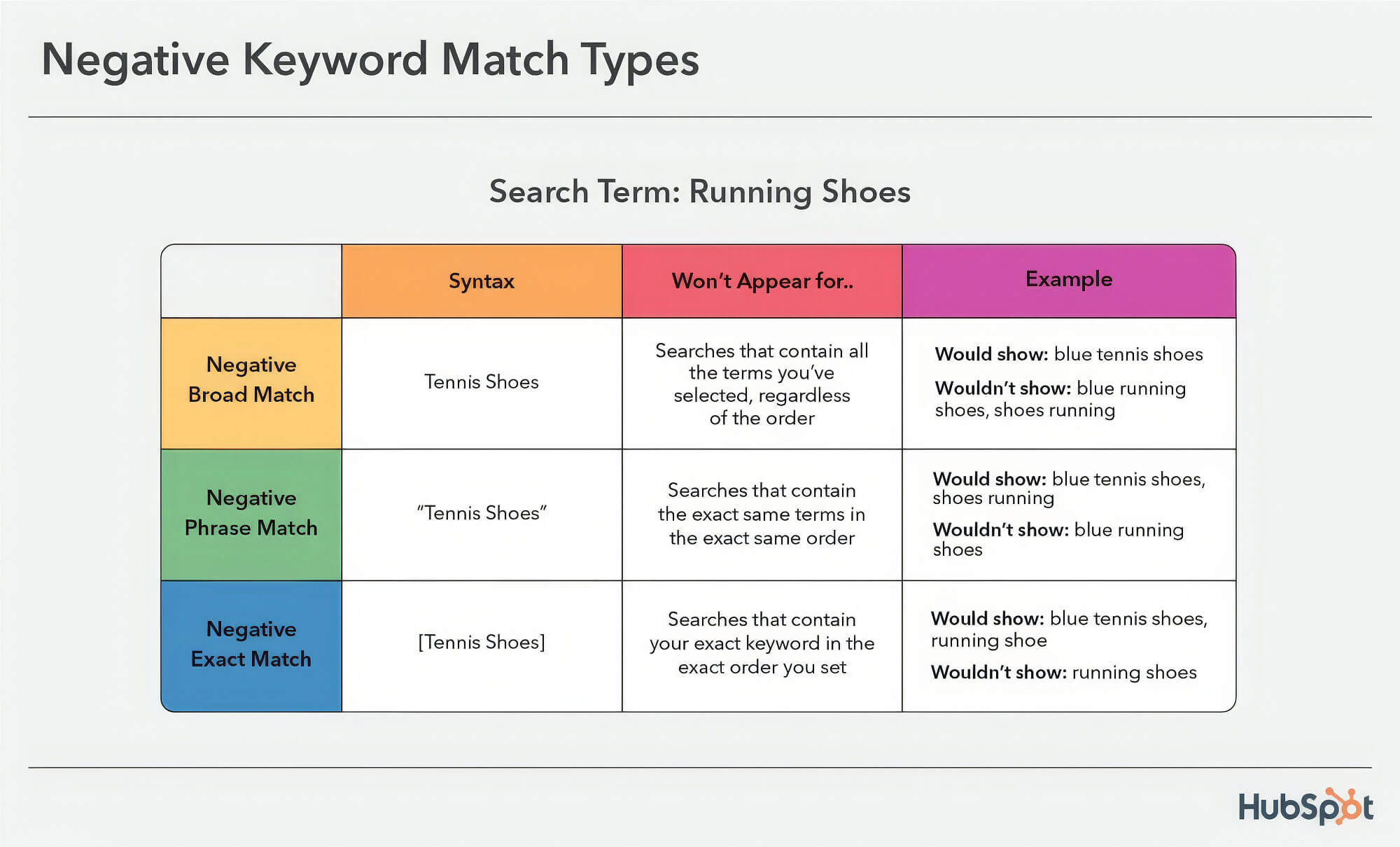
Through such filtering, you are more likely to display your ads to customers interested in your offering and who are more likely to purchase. It also helps you avoid spending on clicks that don’t convert, thus increasing the cost-effectiveness of your campaigns.
Along with intentional negative keywords, you can also add geographic exclusions if you’re trying to focus only on traffic from specific locations.
Now, from where do you get these negative keywords? A good source might be search query reports, which allow you to spot terms that invoke your ads but don’t result in conversions. Competitor analysis using PPC keyword research tools like Google Ads Keyword Planner can also help spot negative keywords.
For any PPC campaign, bleeding money on wasted clicks is a real problem that can eat into the performance of your ads. Negative keywords offer a simple but effective way to filter out this irrelevant traffic, ensuring that your ads are shown only to searchers who are more likely to convert. This leads to better ROI and greater revenue overall.
Continuous Optimisation and Refinement
We’ve mostly been discussing initial PPC keyword research to set up the campaigns. However, this is not a one-time process and needs regular optimisation and continuous monitoring. Without proactive and regular monitoring of PPC keywords, you won’t be able to ensure that your ads reach the right audience.
Developing a routine for monitoring and tracking essential metrics such as CPA, CTR, and conversion rates is crucial for optimal results. This way, you can separate the relevant keywords from the irrelevant ones and modify your keyword list accordingly. You should also reallocate budgets based on the keywords’ performance.
Another great way to refine your campaigns is to split-test different ad copies and landing pages with keyword variations to determine which combinations drive the best results. This continuous process should be part of your PPC strategy.
Finally, make sure you’re also continuously searching for new keywords. Market trends and customer preferences change over time, so the initial list you started with might not be relevant later in the campaign. It’s vital to keep adding and updating the list to keep up with the competition and stay relevant.
Mapping Keywords to the Customer Journey
Different keywords are relevant to the various stages of a customer’s buyer journey. Each stage represents a different intent and mindset of the customer, so it’s vital to align keywords and ads with each stage of the journey. Let’s take each stage separately and understand how to map keywords to it.
1. Awareness Stage
This is the first stage of the buyer’s journey when customers are just starting to be aware of their problems. At this stage, you need to target broad, educational keywords, and ad copy should also focus more on educating the customer about their needs. Landing pages should provide access to blogs and guides so customers can learn more about their problems.
2. Consideration Stage
In this stage, users are weighing their options and solutions, so you must drive them to your business and products/services with more specific keywords. In this stage, the ad copy should provide relevant information and answer customers’ queries to clear their doubts. Landing pages must provide access to reviews, case studies, and other relevant information to help customers make decisions.
3. Conversion Stage
This is the most vital stage, as it’s here that customers finally decide to go with a service/product. That’s why, at this stage, keywords must be highly targeted and combined with ad copy with strong CTAs that entice customers to take action. Landing pages should provide a clean UX, offers, and discounts that guide the customer towards making the final click.
By successfully mapping keywords to each stage of the buyer’s journey, you can capitalise on the customer’s exact search intent and create an ad and landing page that resonates with their needs at that stage.
Measuring and Analysing Keyword Performance
Tracking the correct metrics is integral to measuring and analysing the performance of your keywords and campaigns. Some of the most vital ones that you should be tracking are:
- Click-through Rates (CTR): CTR indicates the percentage of people who click your ads, and a high CTR means that the ads are relevant and engaging to the audiences.
- Conversion Rates: This measures the percentage of people who take a desired action after clicking on your ads. A high conversion rate means the ads and landing pages are compelling enough to entice users to decide.
- Cost-per-conversion (CPC): CPC is the cost required to convert a customer, and it’s vital to optimise CPC to achieve cost efficiency in your campaigns.
- Return On Ad Spend (ROAS): ROAS is the revenue per dollar spent on PPC ads, and a high ROAS indicates a profitable campaign.
Along with regularly conducting PPC keyword research, you must follow the metrics vital to your campaign and assess its performance proactively. Continuous monitoring ensures you’re targeting the right keywords, reaching the right audience, and achieving the desired results.
Integrating PPC and SEO Keyword Strategies
PPC and SEO are both dependent on keyword research. Combining your PPC and SEO strategies can significantly boost your digital marketing. When working in unison, both methods can increase your visibility and improve ROI.
Integrating PPC and SEO keyword strategies has multiple benefits. Data from PPC and SEO campaigns can support and boost each other. For example, SEO data regarding high-performance organic keywords can help refine PPC keyword lists, while PPC data can help SEO boost SERP ranks.
Data analysis from both sources can ensure you invest in keywords that offer the maximum returns. Also, PPC keyword research tools and SEO keyword research tools overlap a lot, so it’s easier to work with both simultaneously.
You can also experiment with cross-channel testing to understand which keywords perform best in PPC and SEO and optimise your research accordingly. Such a multichannel approach helps to minimise efforts, risks and costs while boosting performance.
Best Practices for Effective PPC Keyword Research
To achieve the best results in PPC keyword research, you must follow some best practices that have received widespread acceptance. Some of these are as follows:
- Always stay up to date with industry trends and competition analysis
- Use automated PPC keyword research tools to streamline keyword analysis and bids
- Regularly review, trim and update keyword lists to stay updated with trends
- Align keyword strategies with overall business goals
- Make data-driven refinements wherever possible
- Prioritise keywords based on performance
- Optimise and reallocate budgets as per performance
Unlocking the Potential of PPC with Strategic Keyword Research
At the risk of repeating ourselves, effective keyword research is the key to achieving success with PPC ads. When you target the right keyword ideas, you can improve ad relevance, refine targeting, and boost ROI simultaneously.
Well-selected low-competition keywords help you reach the right audience exactly when they have the right intent, ensuring you get the desired action out of them. By using keyword tools like Google Keyword Planner or the Keyword Magic Tool, you can find negative keywords, exact match terms, and phrases with lower search volume that still generate strong results.
Understanding how users search and analyse data from search engines and search engine results pages ensures you leverage all available insights. These steps will allow you to craft PPC campaigns tailored to your audience and designed for high impact.
Using the strategies and practices mentioned in this guide, you can generate keyword ideas, identify low-competition keywords, and ensure your PPC campaigns achieve the best possible results.
Want expert help to optimise your PPC campaigns? Let sitcentre’s® team craft a data-driven strategy that delivers exceptional results. Contact us today to unlock your campaigns’ full potential!
PPC Keyword Research FAQs
How do you do effective PPC keyword research?
To conduct effective PPC keyword research, start by analysing your target audience and identifying the search terms they are likely to use. Use tools like Google Ads Keyword Planner to generate keyword suggestions and assess their search volume, keyword difficulty scores, and relevance to your business.
Focus on high-intent keywords closely aligned with your goals, as these are more likely to drive conversions. Incorporate negative keywords to filter irrelevant traffic, ensuring your ads only appear for meaningful keyword searches. Using options like phrase match helps refine targeting further. Keep monitoring search trends to adjust and improve your strategy continuously.
What are the strategies for running effective PPC campaigns?
Running effective PPC campaigns involves several strategic steps:
- PPC Keyword Research: Identify targeted keywords using tools like Google Ads and consider search trends and search volume to maximise ROI.
- Optimised Ad Copy: Craft ads with compelling messaging, incorporating high-intent keywords to attract the right audience.
- Landing Page Relevance: Ensure your landing pages align with your ad’s PPC keywords and provide a seamless user experience.
- Budget Management: Allocate funds wisely, focusing on high-performing online advertising campaigns while pausing underperforming ads.
- Performance Monitoring: Track metrics like CTR, conversions, and CPA, and refine your ads based on performance insights.
By integrating these strategies with consistent optimisation, your PPC campaigns will deliver greater results.
How do you combine SEO & PPC keyword strategies for more effective ROI?
Combining SEO keywords and PPC keyword strategies can significantly boost your online advertising campaigns. Use your PPC keyword research step to identify terms with high search volume and competitive potential. Apply these insights to optimise your organic content for greater visibility.
Similarly, analyse the performance of SEO keywords and use them to inform targeted keywords in your ads. For instance, high-converting organic keywords can guide your PPC campaigns, while PPC data can uncover new opportunities for content creation.
By aligning both approaches, you reduce costs, enhance your reach, and improve overall ROI. Continuous monitoring and analysis ensure you stay ahead of changing search trends and market demands.
What are the four factors determining your PPC ad campaign’s success?
- Keyword Selection: Effective PPC keyword research ensures you target high-intent keywords with strong search volume and manageable keyword difficulty scores. Incorporate negative keywords to avoid wasting your budget.
- Ad Relevance: Align your ads with the PPC keywords and user intent. Ad copy and design must be compelling and focused on targeted keywords to attract clicks.
- Landing Page Quality: Your landing page must match the ad’s promise, use phrase matching in messaging, and offer a seamless experience. Relevance and clarity are critical to driving conversions.
- Continuous Optimisation: Monitor key metrics in Google Ads, refine keyword suggestions, and stay updated on search trends to ensure your PPC campaigns remain effective.
Addressing these factors creates a foundation for long-term success in online advertising campaigns.

